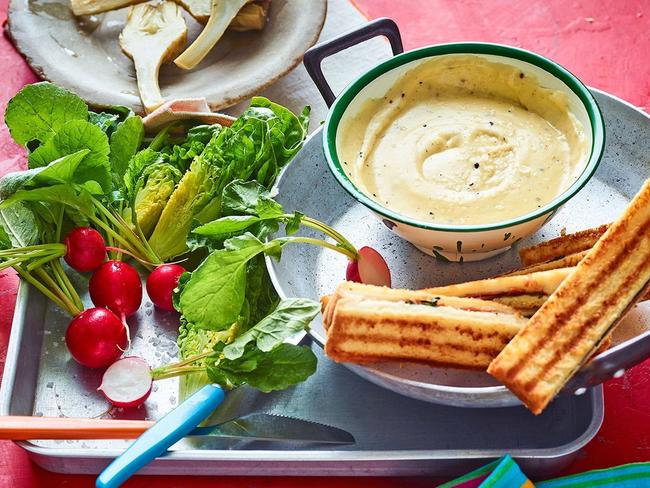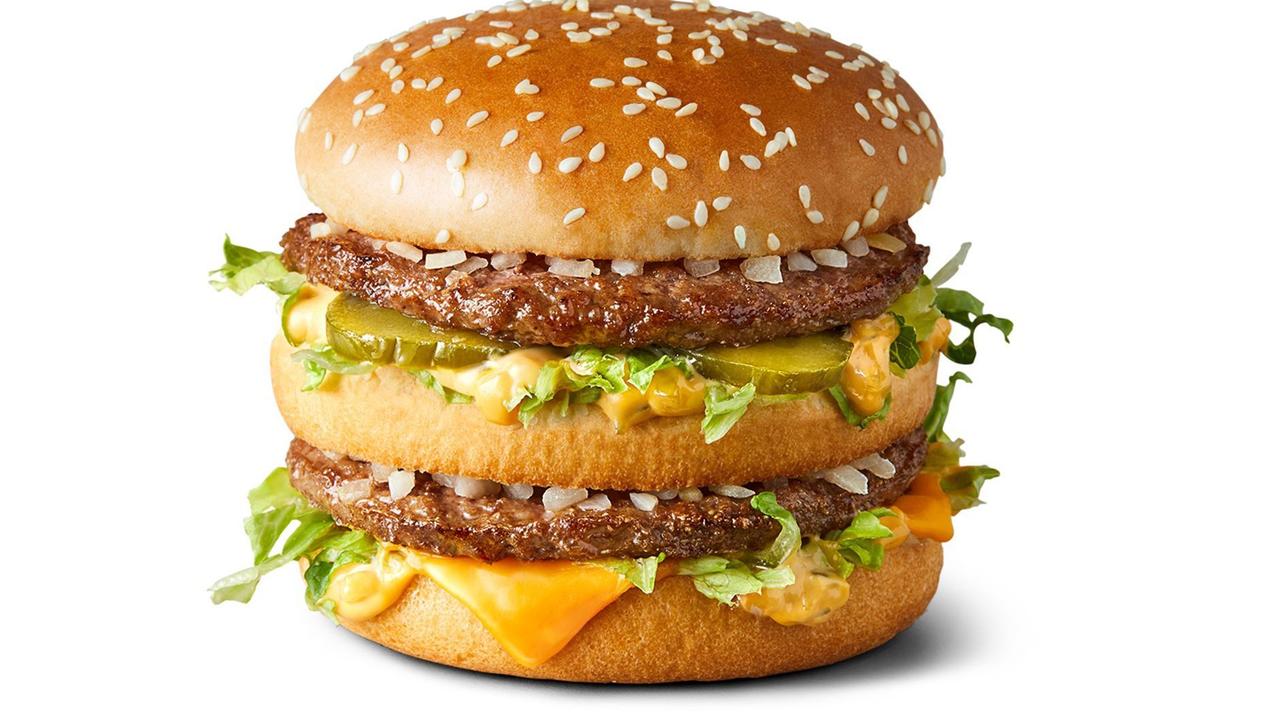Is double-dipping foods unhygienic? Here’s what science says
We take a deep-dive into the science of the social faux pas that is double-dipping your chips into the bowl of dip.
For those who have been living under a rock, double-dipping is the act of dipping a chip, taking a bite, then dipping the same chip back into the communal snack.
General consensus among the delicious. team initially finds that double-dipping is, of course, pretty questionable behaviour. However, a small scratch of the surface reveals a double-dipping loophole by way of a dip, chip rotation, then dipping the other end. This method also applies to veggie sticks.
The room splits at the suggestion. Tensions flare. Some editors screw their noses up at the notion, crying, “But you’ve already touched it!”
“Yeah, but only with your hand. It’s not been in your mouth,” comes the retort.
“I’m bringing my own dip from now on.”
Related story: Party for one: 30 easy recipes for when you’re dining alone

Now, while we don’t have the means to accurately test bacteria levels here at delicious. HQ, thankfully a class of undergraduate researchers at Clemson University in South Carolina has put their student loans to good use, and dared to double dip. All in the name of science.
The students’ aim was to establish whether or not bacteria from bitten chips is transferred to dips, how much bacteria is involved in the transfer, and environmental factors effects on the bacteria ie: the survival rate of bacteria based on the type of dip.
The plucky young go-getters started by comparing bitten versus unbitten crackers, measuring how much bacteria could transfer from the cracker to a cup of water.
The students found about 1,000 more bacteria per millilitre of water when crackers were bitten before dipping than solutions where unbitten crackers were dipped.
Related story: Jarcuterie is the Covid-friendly festive food trend you need in your life

In a second experiment, students tested bitten and unbitten crackers in water solutions with pH levels typical of dips – pH levels of 4, 5 and 6, which are all toward the more acidic end of the pH scale. They tested for bacteria right after the crackers were dipped, then measured the solutions again two hours later. More acidic solutions tended to lower the bacterial numbers over time but did not eliminate the bacteria entirely.
“Spare your medical nonsense, give it to us straight!” we hear you cry. Don’t worry, we’re getting there.
The final phase of the experiments was a real-world cocktail party (well, close enough, it was a tray of dips in a sterile laboratory) featuring three typical party dips – salsa, chocolate, and cheese dips, all of which varied in pH levels and viscosity.
Then, they dipped.
Related story: Why you need to throw out your kitchen sponge

In the absence of double-dipping, the foods had no detectable bacteria present. Once subjected to double-dipping, the salsa took on about five times more bacteria (1,000 bacteria/ml of dip) from the bitten chip when compared to chocolate and cheese dips (150-200 bacteria/ml of dip). But two hours after double-dipping, the salsa bacterial numbers dropped to about the same levels as the chocolate and cheese.
These phenomena can be explained by viscosity. Chocolate and cheese dips are thicker than salsa. The lower viscosity means that more of the dip touching the bitten cracker falls back into the bowl rather than sticking to the cracker. And as it drops back into the communal container, it brings with it bacteria from the mouth of the double-dipper.
The acidity of the salsa, however, killed more bacteria than the chocolate or cheese dips, levelling the playing field.
Related story: Science says consuming wine and cheese daily is good for your brain

So, is double-dipping something worth freaking out over? Well, yes and no. Airborne illnesses like influenza, pneumonic plague, Covid and garden variety colds are known to be spread by saliva. These germ droplets are easily aerosolized by coughing or sneezing, and can settle on doorknobs, tables, and even dips.
It’s a gross habit, to be sure, but unless you’ve got Typhoid Mary on the guestlist, you’re about as likely to pick up a communicable disease from the dip as you are from a conversation with the offender.
The long and the short of it is common sense: wash your hands regularly, avoid the double-dippers, and if you’re sick – stay home.
Related story: Chip chip hooray! 68 dip recipes to get the party started
For more food, travel and lifestyle news, go to delicious.com.au
Originally published as Is double-dipping foods unhygienic? Here’s what science says


